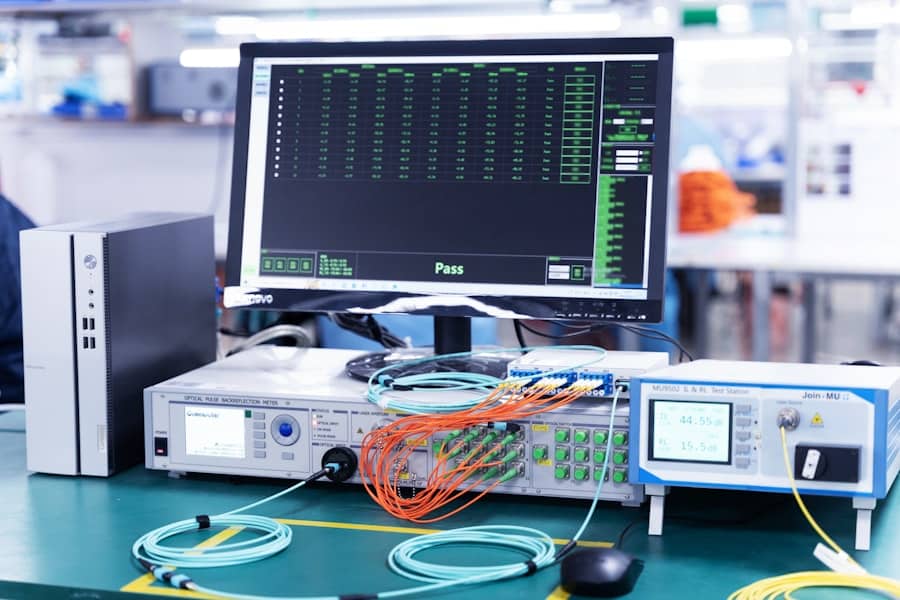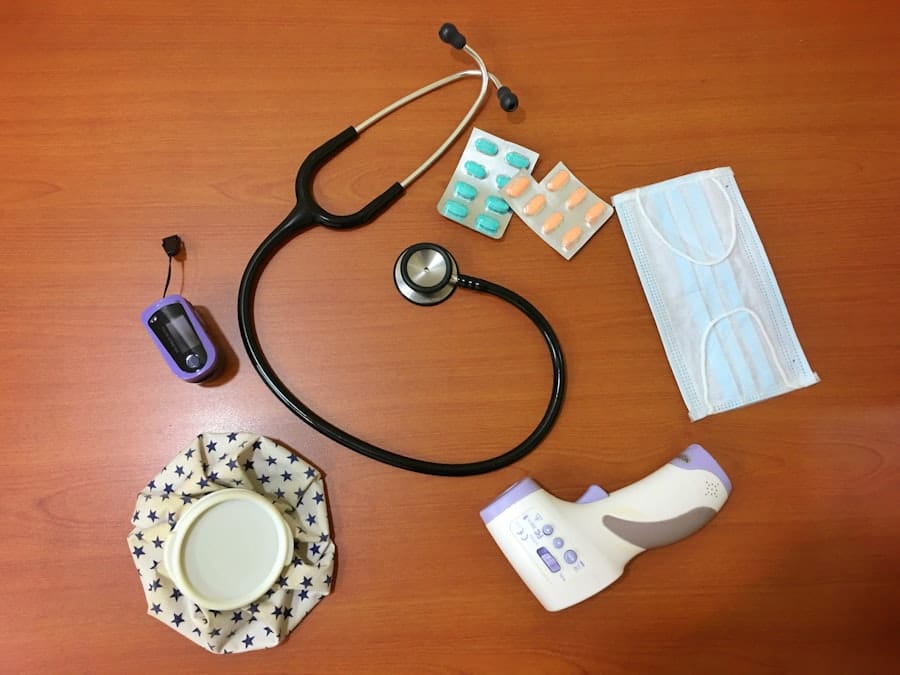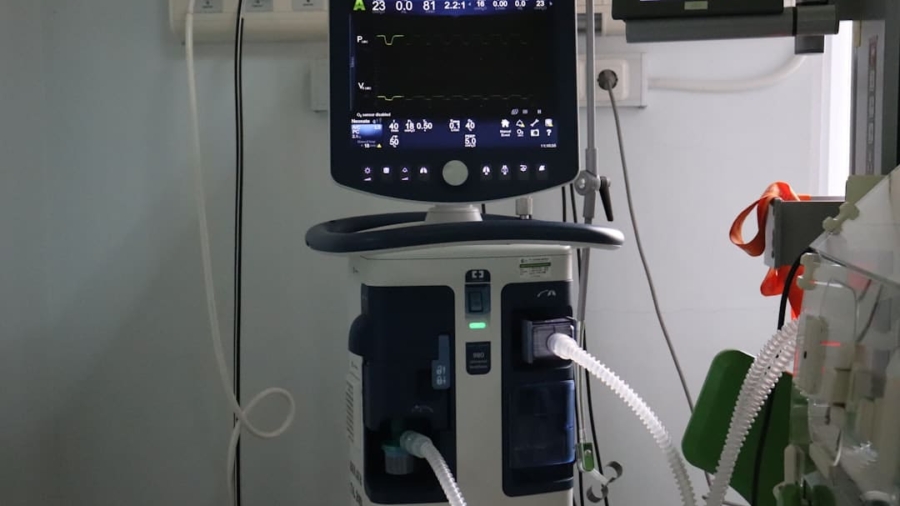The integration of artificial intelligence (AI) into healthcare has revolutionized various aspects of patient care, particularly in remote patient monitoring (RPM) systems. RPM refers to the use of technology to monitor patients’ health data outside traditional clinical settings, allowing for continuous observation and timely interventions. The advent of AI has significantly enhanced the capabilities of these systems, enabling healthcare providers to analyze vast amounts of data efficiently and derive actionable insights.
This transformation is particularly crucial in managing chronic diseases, where regular monitoring can lead to better health outcomes and reduced hospitalizations. AI technologies, such as machine learning and natural language processing, are increasingly being employed to interpret complex health data collected from wearable devices, mobile applications, and other digital health tools. These technologies not only facilitate real-time monitoring but also empower healthcare professionals to make informed decisions based on predictive analytics.
As the demand for remote healthcare solutions continues to grow, driven by factors such as an aging population and the recent global pandemic, the role of AI in RPM systems is becoming more prominent and essential.
Key Takeaways
- AI plays a crucial role in remote patient monitoring systems by analyzing data and providing real-time insights.
- The use of AI in remote patient monitoring leads to improved patient outcomes, reduced healthcare costs, and enhanced efficiency.
- AI brings benefits such as early detection of health issues, personalized treatment plans, and predictive analytics for better patient care.
- Challenges of AI in remote patient monitoring include data privacy concerns, potential biases in algorithms, and the need for healthcare professionals to interpret AI-generated insights.
- Ethical considerations in AI-driven remote patient monitoring include ensuring patient consent, transparency in AI decision-making, and addressing potential disparities in access to AI technology.
The Role of AI in Remote Patient Monitoring
Data Analysis and Pattern Identification
AI plays a crucial role in remote patient monitoring systems by enhancing data collection, analysis, and interpretation. One of the most significant contributions of AI is its ability to process large volumes of data generated by various monitoring devices, such as wearable devices that track vital signs like heart rate, blood pressure, and glucose levels.
Real-time Insights and Prompt Intervention
AI algorithms can analyze this data in real-time, identifying patterns and anomalies that may indicate a deterioration in a patient’s condition. This capability allows healthcare providers to intervene promptly, potentially preventing serious complications.
Personalized Care and Predictive Analytics
Machine learning algorithms can learn from historical data to predict future health events based on a patient’s unique profile. For example, if a patient with diabetes consistently exhibits certain patterns in their glucose levels, AI can alert healthcare providers when deviations occur, prompting timely adjustments in treatment plans. This personalized approach not only improves patient outcomes but also enhances patient engagement by involving them in their own care management.
Benefits of AI in Remote Patient Monitoring Systems

The benefits of incorporating AI into remote patient monitoring systems are manifold. One of the most significant advantages is the enhancement of patient safety and care quality. By enabling continuous monitoring and real-time alerts for critical changes in health status, AI helps healthcare providers respond swiftly to potential emergencies.
For instance, an AI-driven RPM system can notify a physician if a patient’s heart rate exceeds a certain threshold, allowing for immediate intervention that could save lives. Additionally, AI contributes to improved efficiency within healthcare systems. By automating data analysis and reducing the need for manual monitoring, healthcare professionals can allocate their time and resources more effectively.
This efficiency is particularly beneficial in managing large patient populations, as it allows providers to focus on high-risk patients who require more intensive care while ensuring that lower-risk individuals are still monitored adequately. Furthermore, the reduction in hospital visits due to effective remote monitoring can lead to significant cost savings for both patients and healthcare systems.
Challenges and Limitations of AI in Remote Patient Monitoring
Despite the numerous advantages of AI in remote patient monitoring systems, several challenges and limitations persist. One major concern is the quality and reliability of the data collected from various devices. Inconsistent data quality can lead to inaccurate predictions and potentially harmful clinical decisions.
For example, if a wearable device malfunctions or if a patient fails to wear it consistently, the resulting data may not accurately reflect their health status. Ensuring that devices are reliable and that patients adhere to monitoring protocols is crucial for the success of AI-driven RPM systems. Another challenge lies in the integration of AI technologies with existing healthcare infrastructure.
Many healthcare organizations still rely on legacy systems that may not be compatible with advanced AI solutions. This lack of interoperability can hinder the seamless exchange of information between different platforms, limiting the effectiveness of AI applications in RPM. Additionally, there is a need for standardized protocols and guidelines to ensure that AI algorithms are developed and validated appropriately for clinical use.
Ethical Considerations in AI-Driven Remote Patient Monitoring
The deployment of AI in remote patient monitoring raises several ethical considerations that must be addressed to ensure responsible use of technology in healthcare.
The collection and analysis of sensitive health information necessitate robust safeguards to protect against unauthorized access and breaches.
Healthcare organizations must implement stringent data protection measures and comply with regulations such as the Health Insurance Portability and Accountability Act (HIPAA) to maintain patient confidentiality. Moreover, there is an ethical imperative to ensure that AI algorithms are free from bias and discrimination. If training data used to develop these algorithms is not representative of diverse populations, there is a risk that certain groups may receive suboptimal care or be overlooked entirely.
It is essential for developers and healthcare providers to prioritize equity in AI applications by actively seeking diverse datasets and conducting thorough evaluations of algorithm performance across different demographic groups.
Future Trends and Developments in AI for Remote Patient Monitoring

As technology continues to evolve, several trends are emerging that will shape the future of AI in remote patient monitoring systems. One notable trend is the increasing use of predictive analytics powered by AI algorithms. These advanced analytics will enable healthcare providers to anticipate potential health issues before they arise, allowing for proactive interventions that can significantly improve patient outcomes.
For instance, predictive models could identify patients at high risk for hospital readmission based on their monitoring data, enabling targeted interventions that reduce readmission rates. Another trend is the growing integration of AI with telehealth services. As remote consultations become more commonplace, combining telehealth with AI-driven RPM can enhance the overall patient experience.
For example, during a virtual visit, a physician could access real-time data from a patient’s monitoring devices, allowing for more informed discussions about treatment options and adjustments. This integration not only streamlines care delivery but also fosters a more collaborative relationship between patients and providers.
Case Studies of Successful Implementation of AI in Remote Patient Monitoring Systems
Several case studies illustrate the successful implementation of AI in remote patient monitoring systems across various healthcare settings. One notable example is the use of AI-driven RPM solutions for managing chronic obstructive pulmonary disease (COPD). A study conducted by researchers at a leading academic medical center demonstrated that patients using an AI-enabled RPM system experienced fewer exacerbations and hospitalizations compared to those receiving standard care.
The system utilized machine learning algorithms to analyze data from wearable sensors and provide personalized feedback to patients regarding their respiratory health. Another compelling case study involves the application of AI in diabetes management through remote monitoring platforms. A prominent health technology company developed an RPM system that leverages AI algorithms to analyze continuous glucose monitor (CGM) data alongside lifestyle factors such as diet and exercise.
The system provides real-time insights and recommendations tailored to individual patients’ needs, resulting in improved glycemic control and enhanced patient engagement. This case highlights how AI can empower patients with actionable information while supporting healthcare providers in delivering personalized care.
The Impact of AI on Remote Patient Monitoring
The impact of artificial intelligence on remote patient monitoring systems is profound and far-reaching. By enhancing data analysis capabilities, improving patient safety, and promoting personalized care, AI has transformed how healthcare providers manage chronic conditions and engage with patients outside traditional clinical settings.
As we look toward the future, it is clear that the synergy between AI and remote patient monitoring will continue to evolve, leading to more effective healthcare delivery models that prioritize patient outcomes and satisfaction. The successful case studies already emerging serve as a testament to the potential benefits of this integration, paving the way for broader adoption across various healthcare settings. Ultimately, the continued development of AI-driven RPM systems holds great promise for improving health outcomes while reshaping the landscape of modern healthcare delivery.
In recent years, the integration of AI in remote patient monitoring systems has revolutionized healthcare by enhancing the ability to track patient health data in real-time, leading to improved patient outcomes and more efficient care delivery. These systems leverage advanced algorithms to analyze data from wearable devices and other health monitoring tools, providing healthcare professionals with actionable insights. For those interested in exploring the broader technological landscape, an article on the Mobility 2021 conference discusses various innovations, including advancements in AI and its applications in healthcare, which could provide further context and understanding of the current trends in remote patient monitoring.
FAQs
What is AI in Remote Patient Monitoring Systems?
AI in Remote Patient Monitoring Systems refers to the use of artificial intelligence technology to analyze and interpret data collected from remote monitoring devices used by patients. This technology allows for the detection of patterns, trends, and anomalies in the data, which can help healthcare providers make more informed decisions about patient care.
How does AI benefit Remote Patient Monitoring Systems?
AI in Remote Patient Monitoring Systems can benefit healthcare providers and patients by providing real-time analysis of patient data, early detection of health issues, personalized treatment recommendations, and improved efficiency in managing large volumes of patient data.
What are some examples of AI applications in Remote Patient Monitoring Systems?
Some examples of AI applications in Remote Patient Monitoring Systems include predictive analytics for identifying potential health issues, natural language processing for interpreting patient feedback, machine learning algorithms for personalized treatment recommendations, and computer vision for analyzing medical imaging data.
What are the challenges of implementing AI in Remote Patient Monitoring Systems?
Challenges of implementing AI in Remote Patient Monitoring Systems include ensuring data privacy and security, integrating AI technology with existing healthcare systems, addressing regulatory and compliance requirements, and managing the potential for bias in AI algorithms.
How is AI in Remote Patient Monitoring Systems impacting healthcare delivery?
AI in Remote Patient Monitoring Systems is impacting healthcare delivery by enabling more proactive and personalized care, improving patient outcomes, reducing healthcare costs, and enhancing the overall efficiency of healthcare delivery.

